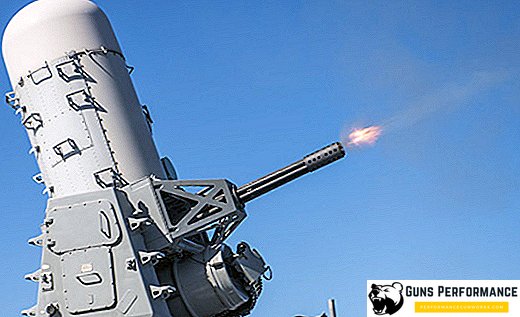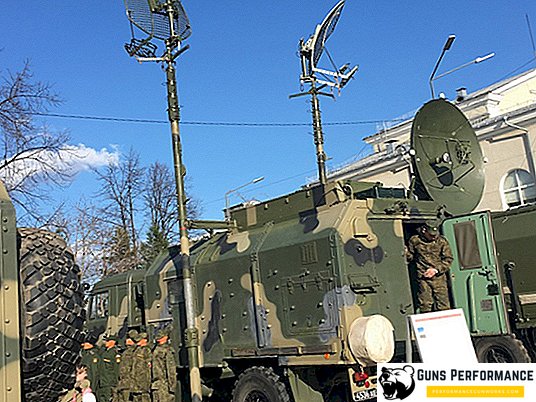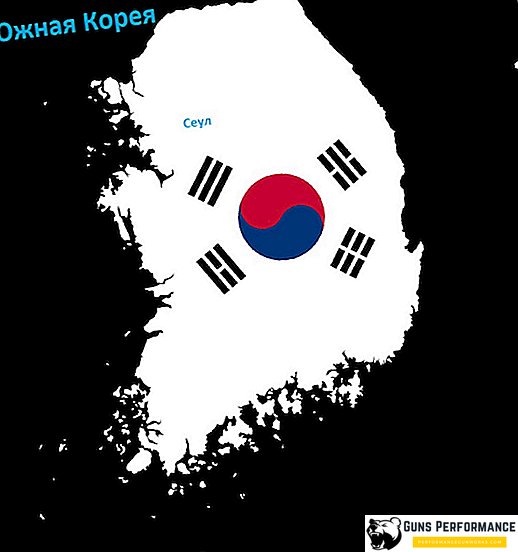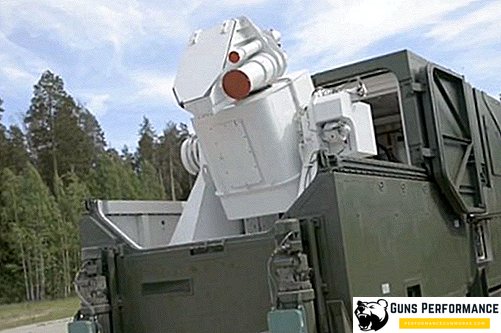The Swiss Confederation is a federal republic, in which the legislative power is represented by the National Council and the Council of Cantons. The post of president of Switzerland is occupied by the head of the Federal Council. Since the country has a high level of democracy, the head of the executive branch is elected from among the ministers only for 1 year. The election for two consecutive terms is not allowed. Due to this feature in the country, representatives of different regions and language groups are participating in the management, which allows to avoid conflicts on this basis.
The emergence of the Swiss state in ancient times
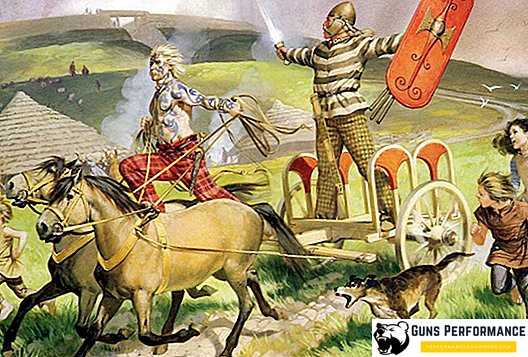
In the II-I centuries BC, Celtic Helvetians appeared in the territories of modern Switzerland, which came from the southern regions of ancient Germany. The tribes of the Rets lived there, the origin of which is not known exactly. Ancient historians associated retas with Etruscans. It was from the name of the Helvets tribe that the country was called Helvetia. In the 1st century AD, Celtic tribes living in the territories of modern Switzerland were forced to migrate to the lands of Galia, but soon returned. Several reasons contributed to this:
- Other Germanic tribes began to push the Helvets;
- The lands of Galia were much richer;
- In 58 BC, Roman troops defeated the Helvets.
Returning to their lands, the Celtic tribes were soon subordinated and romanized by ancient Rome. In the III century Rome-cultivated barbarians were attacked by Germanic tribes, whose main task was to rob and capture prisoners.
The seriously weakened Roman Empire could no longer protect all of its border provinces, so the territories of present-day Switzerland gradually became deserted. In the 5th century, the German barbarians took control of this land.
In the 6th century, the territories of Helvetia were conquered by the Franks, and later became part of the empire of Charlemagne. In the 9th century, the territories of Switzerland were divided into two parts. The eastern lands of the region became part of the Holy Roman Empire. The western part went to Burgundy. In the XI-XII centuries, the following major cities of the region acquired a special status:
- Geneva;
- Zurich;
- Bern and other medieval cities.
Towards the 13th century, these cities began to gain independence in accordance with the decrees of the Holy Roman Empire, which had by this time weakened. Mountain distant lands in general have become almost autonomous. The free lands received a unique opportunity for the Middle Ages to trade and develop freely, without paying taxes to the king.
All this continued until the Habsburg dynasty came to power, during the reign of which the process of centralization of power began. All this caused discontent among the residents of Helvetia, and they tried to resist the Hapsburgs. But individually, the cantons were not able to resist the royal army. At the end of the 12th century, several cantons decided to unite into a single union in order to defend their interests. These were:
- Canton Schwyz;
- Uri;
- Unterwalden.
In 1315, the Habsburg army attempted to subjugate the lands of the new union to its power. There was a battle at Morgarten, in which the Austrian knights suffered a crushing defeat. This happened due to the fact that the Swiss used features of the mountain and forest relief, where the cavalry could not accelerate and turn around. After the victory of the union, other cantons also joined him to repel the monarchy. The confrontation lasted until 1388, in which the Habsburgs made peace with the Swiss alliance. At that time, it already consisted of 8 cantons:
- Uri;
- Schwyz (he gave the name to the whole union);
- Lucerne;
- Unterwalden;
- Tsut;
- Zurich;
- Berne;
- Glarus.
Other European cities also tried to defend their independence, but the Habsburg dynasty cracked down on the recalcitrant, imposing huge contributions to the cities after the victory.
Reforms in Switzerland in the XV-XVIII centuries

Military victories inspired the Swiss alliance, and he began to seize new territories through wars and the accession of new cantons. Now Switzerland could be a full participant in European big politics and participate in wars, defending its interests. In 1499, the united army of the Swiss Union was able to defeat the army of Maximilian of Habsburg, after which the union gained official independence. In 1513, the Swiss union was replenished with five more cantons, after which it was transformed into the Confederation, consisting of 13 regions. At the peak of its popularity, the new state continued to seize land, setting a goal to seize Italy.
In 1515, Swiss troops clashed with a united army of the French and the Venetians, after which they decided that they had enough land. It should be noted here that, despite the successes on the battlefield, as a centralized state, the Confederation of the Swiss was weak and unstable:
- There was no single authority in the country;
- To resolve issues of foreign and domestic policy, the Diet was periodically convened;
- Switzerland was not a single union state, it was just a union of several independent cantons.
A single state was formed only in 1848, after Switzerland was captured by the French army.
In the 16th century, a struggle between Catholics and Protestants began in the country. In Zurich, the Reformation was headed by Zwingli, and in Geneva - Calvin. Most of the inhabitants of Switzerland became Protestants: this religion was more suitable for the urban middle class, contributing to its development. At the same time, approximately 30% of Swiss people remained loyal to the Catholic religion, which caused numerous armed clashes at the end of the 16th and throughout the 17th centuries. In the end, Catholics recognized the right of Protestants to freedom of religion and stopped provoking conflicts. The Swiss cantonal union managed to keep intact.
In 1648, the Peace of Westphalia officially recognized Switzerland as a state independent of the Holy Roman Empire. In the XVIII century, the population grew by 400,000 inhabitants. Since the majority of citizens were followers of the Reformation, it was not slow to give their results:
- Began a rapid economic growth;
- Developed new manufactures;
- New business practices emerged;
- Trade improved.
All this made the life of Swiss citizens much richer than in other parts of Europe.
Features of the development of the Swiss state in the XIX century

The most important role in the formation of the Swiss state in the XIX century was played by the Napoleonic wars. Since the country was strategically located, Napoleon Bonaparte included it in his sphere of interest. In 1798 the territory of the Confederation was occupied by French troops. It was thanks to France that the Constitution appeared in Switzerland, in which the foundations for the creation of a single state, the Helvetic Republic, were laid down. After the adoption of the Law, the following changes occurred in the country:
- A strong central authority was created;
- Eliminated all forms of personal addiction.
In 1803, Napoleon decided to restore the former cantonal structure in Switzerland. After Napoleon’s empire collapsed, the Congress of Vienna was convened. This happened in the years 1814-1815. On it, the Swiss decided that an independent country would be created, the main difference of which would be the state of "eternal neutrality". It should be noted that Switzerland is still building its foreign policy based on this principle.
The Allied Treaty of 1814 stipulated that the Swiss state was a voluntary union of 22 cantons, while there was still no serious central authority in it. Over the next 30 years, two trends emerged in the country, each of which insisted on its version of the country's further development. The most progressive areas, which included the 7 most economically developed cantons, insisted on liberalizing the country. The other part of the cantons was conservative and opposed any democratic transformation. In 1847, a civil war broke out in the country, in which the conservatives were defeated.
After the civil war in the country, the Constitution of 1848 was adopted, which has the following features:
- The cantons have united into one state;
- A unified Federal Council was established;
- A bicameral legislative assembly was created, consisting of the National Council and the Council of Cantons.
In 1874, a constitutional reform was carried out in the country, which seriously expanded the powers of the central government. This affected the well-being of the economic development of the country. It was decided to abandon the export of grain crops and other raw materials and switch to the export of ready-made food products, which brought great benefits to the country.
Switzerland in the first half of the 20th century, the struggle to preserve the integrity

When the First World War began, Switzerland was under the threat of revolution. The fact is that some of the inhabitants spoke French and supported France, and the German-speaking residents were for Germany. The revolution was suppressed in the bud, because no one wanted the war, realizing that in any case a prosperous life would then end. Despite the difficult economic situation in Europe, Switzerland was only the winner, as it traded with everyone. But the standard of living of ordinary workers fell, which led to the following events:
- In 1918, there was a general strike in the country;
- The government was forced to enter the 48-hour work week;
- In addition, it was necessary to create a system of social guarantees for the citizens of Switzerland.
After the war, the position of Switzerland against the background of general devastation in Europe looked impressive. Before the outbreak of World War II, the country's economy showed steady and steady growth. Since the beginning of World War II, the neutrality of Switzerland was not violated, although the location of the state surrounded by Germany, Italy and the German-occupied France instilled constant fears.
The position of Switzerland in the second half of the XX century

After the end of World War II, Switzerland faced an unexpected problem - the status of "eternal neutrality" prevented the state from joining the UN, despite the fact that Switzerland was previously a member of the League of Nations. The government of the country decided to take a course towards partial integration with Europe, which meant close economic cooperation.
At the end of the 1960s and the beginning of the 1970s, a tense situation was again ripe in the country: in the canton of Bern, French-speaking residents demanded the creation of a new canton. This was greatly complicated by the fact that the German-speaking population of this region was strongly opposed to such transformations. The situation was resolved by holding a referendum. In 1979, the new canton of Jura was created, which immediately became part of Switzerland.
For a long time, local residents resisted UN membership. For the first time this question was raised in 1986 at a general national referendum. Then more than 75% of Swiss residents were against membership in this organization. The next referendum on this issue was held only in 2002, and this time 55% of local residents supported joining the United Nations.
In 2000, a new constitution appeared in Switzerland. It replaced the old one, which was adopted in the XIX century. Since 2000, the influence of various “right-wing” parties began to grow in the country. For example, the People’s Party of Switzerland increases the number of its voters from year to year, and was able to win in the elections that took place in 2007.
Status and duties of the President of Switzerland

The Swiss President does not perform such functions as the presidents of other European countries. He is not the head of government or head of state. The main functions of government are performed by the Federal Council. The president is its chairman, so if the votes of board members are equally divided, then the head’s voice will play a decisive role. It should be noted here that an equal number of votes in the council is extremely rare, since the number of members in it is odd.
In addition to the fact that the head of the Federal Council is obliged to manage his department, he is charged with the following duties:
- The President conducts television and radio performances on New Year's Eve and national Swiss holidays;
- Leaves for foreign visits.
At the same time, the heads of other states are adopted jointly by the members of the Federal Council, and the presidential orders do not have legislative force. The inauguration of the head of the council takes place every year, since from 1848 the presidents are elected only for a year.
The list of heads of the Federal Council from 2010 to 2018 is as follows:
- 2010 - Doris Leuthard. Prior to that, twice held the post of vice president;
- 2011 - Micheline Calmy-Re. Was president in 2007. In 2008, it agreed on gas supplies to Switzerland from Iran;
- 2012 - Evelyn Widmer-Schlumpf. The daughter of former president Leon Schlumpf;
- 2013 - Or Mauer. He was considered a nationalist politician, so his election to the post was accompanied by numerous scandals;
- 2014 - Didier Burkhalter. He was head of the Department of the Interior in 2009–2011;
- 2015 - Simonetta Sommaruga. Previously headed the Department of Justice and Police;
- 2016 - Johann Schneider-Ammann. He was head of the Federal Department of Economics;
- 2017 - Doris Leuthard was again elected to the presidency;
- 2018 - Alain Berse. In 2018, he was vice president.
The last president of Switzerland is a doctor of economics.
Features of the Swiss constitution and form of government in the country

The current Swiss Constitution is a thoroughly revised version of the main document adopted in 1848. It defines the features of the federal structure of the country and fixes all the elements of the political system that exist to this day. The constitution that is now in force was adopted in 1999. She streamlined some paragraphs of the 1848 variant and developed some provisions in accordance with the spirit of the times. The new version has undergone 6 amendments, the last of which was introduced in 2004.
The new Constitution has the following features:
- There is a possibility of partial or full revision of the document;
- This requires the collection of signatures of at least 100,000 Swiss citizens;
- After this, a national referendum should be declared;
- If the proposal receives a majority of the votes of citizens and the support of the cantons, then it is accepted.
Some of the Swiss cantons have only 1/2 votes. The highest judicial authority in the country is exercised by the Federal Supreme Court.
The residence of the President of Switzerland and its features

The residence of the head of the Federal Council of Switzerland is a palace in the center of the city of Bern. It is there that the president’s reception is located. This building is called the Federal Palace, and in addition to the head of Switzerland there are the Federal Council and the Federal Assembly. The construction of the palace was begun in 1894 and ended in 1902. To create this building was used the project of the architect Hans Auer, who had Swiss-Austrian roots.
Prior to this, the parliament was located in the Federal Town Hall, which was built in 1857 by the project of the architect Jacob Friedrich Studer. Within a few years, it became clear that a small town hall could not accommodate the entire Swiss parliament. The government decided to build a special building for their needs. By the roughest calculations, the construction of the Federal Palace cost 7,200,000 Swiss francs, and this is in accordance with the rates of that time. К особенностям резиденции президента Швейцарии относятся следующие нюансы:
- Высота Федерального дворца - 64 метра;
- Внутри имеется купол, высота потолка которого изнутри достигает 33 метров;
- В самом центре купола расположена мозаика, на которой изображён герб Швейцарии в окружении гербов всех 22 кантонов, которые входили в состав страны по состоянию на 1902 год;
- Отдельно расположен герб кантона Юра, который был создан только в 1979 году;
- В центре дворца расположена статуя основателей Швейцарии, которую сделал известный скульптор Джеймс Виберт.
Интересной особенностью являются специальные галереи, которые позволяют туристам наблюдать за заседаниями парламента страны. Только зафиксировать это невозможно, так как в здании запрещена фото- и видеосъёмка. Официально фотографировать в Федеральном дворце можно только два раза в год - 31 июля и 1 августа. Последняя серьёзная реставрация резиденции президента Швейцарии проводилась с 2006 по 2008 годы.




